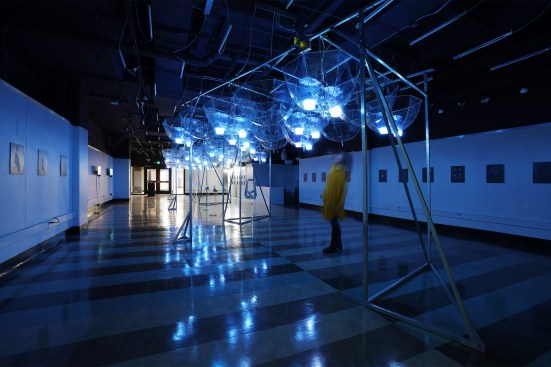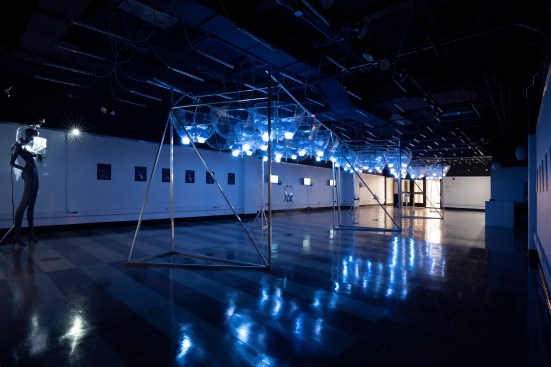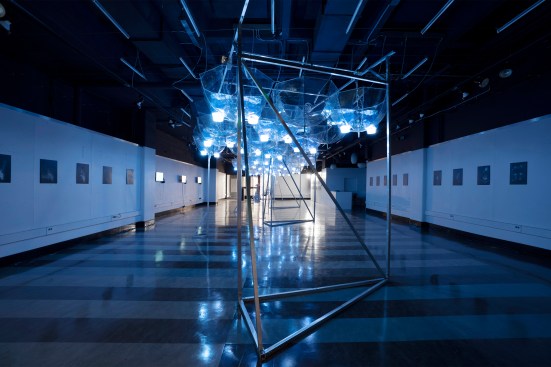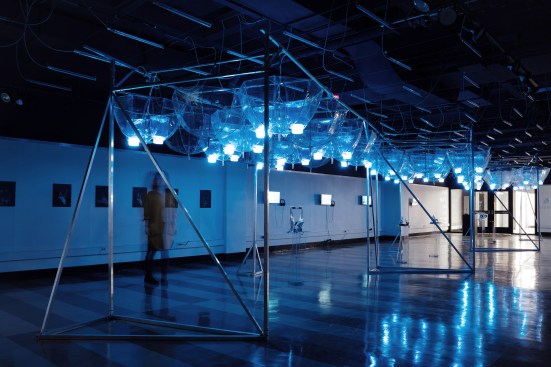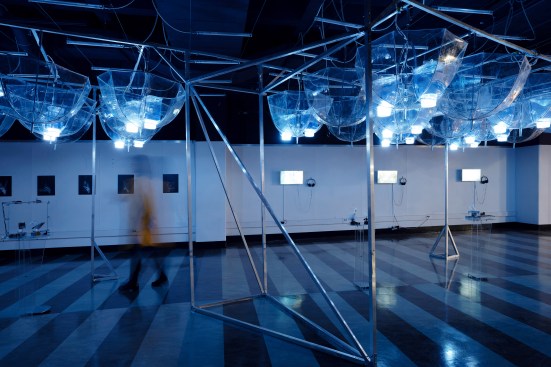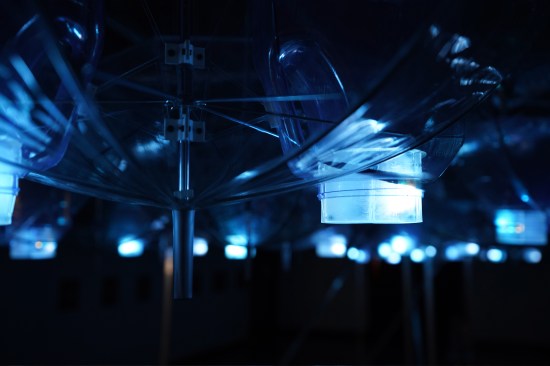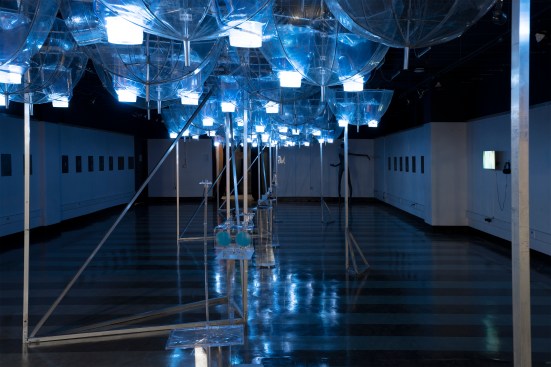Project Description
VENTS is an immersive site-specific installation designed as an ephemeral monument of environmental catastrophe Hurricane Florence, which took place in North and South Carolinas of the US during September 2018. Its first debut was at University of North Carolina at Charlotte in October 2018, and has recently been reconfigured and installed at UC Berkeley College of Environmental Design during January and February of 2020.
Undulating along the central axis of the 2,200 square feet Wurster Gallery is a lightweight aluminum frame supporting a canopy of kinetic umbrella modules. This canopy produces a “rain” of air puffs subtly felt on the skin with a visual pattern of color LED. Light, sound and air movements fluctuate according to the drastically changing speed of the Hurricane Florence combined with real-time wind velocity. The physical paths relating air movements at separate locations– where “vents” are typically understood as part in mechanical terms–¬¬¬ are replaced with data transmission, translating environmental condition elsewhere into visual, audial and tactile experience within the gallery.
The site presents challenges of strong existing visual identities of two horizontal planes: the floor with orthogonally oriented linear tile patterns and the lighting grid which consists of an array of LED tubes situated at 9’-3” above. The canopy of VENTS 2.0 juxtaposes to these two horizontal planes with an 18-degree rotation, supported by 7 vertical frames. The vertical supports have 4 identical profiles made out of salvaged aluminum 1.25” square tubing and 1″ U channel. The horizontal, vertical and diagonal pieces are connected using customized metal brackets, and are assembled onsite.
The canopy consists of 45 umbrellas total, 24 of which are modified with kinetic air chambers attached. Each modified umbrella weighs 3 lb., and could be easily disassembled and stored. This allows the project to be iterated and adapted to various site conditions. The air chambers with color-changing LED strips attached are situated right above average human height, illuminating softly a series robotic instruments on display right underneath, challenging the spatial condition as a dynamic device.
Borrowing a technique implemented widely in both art installations as well as the gaming industry, the kinetic chamber is designed to generate air vortex that one can feel when collapsing on the skin. Oriented with the opening pointing downwards above one’s head, the chambers produce invisible “breezes” of the air puffs exiting at certain interval from the outlets, which become visible as rings of colored droplets of fog and light if fog is seeded through clear PVC tubing inserted into the air chamber through the handle of the jug. With the LED at the outlet, fog rings maintain glowing across certain distance of their travel. The movements of actuators on these mechanisms are synced with the visual effect, which create sound that appears to be a randomized pattern in the space.
